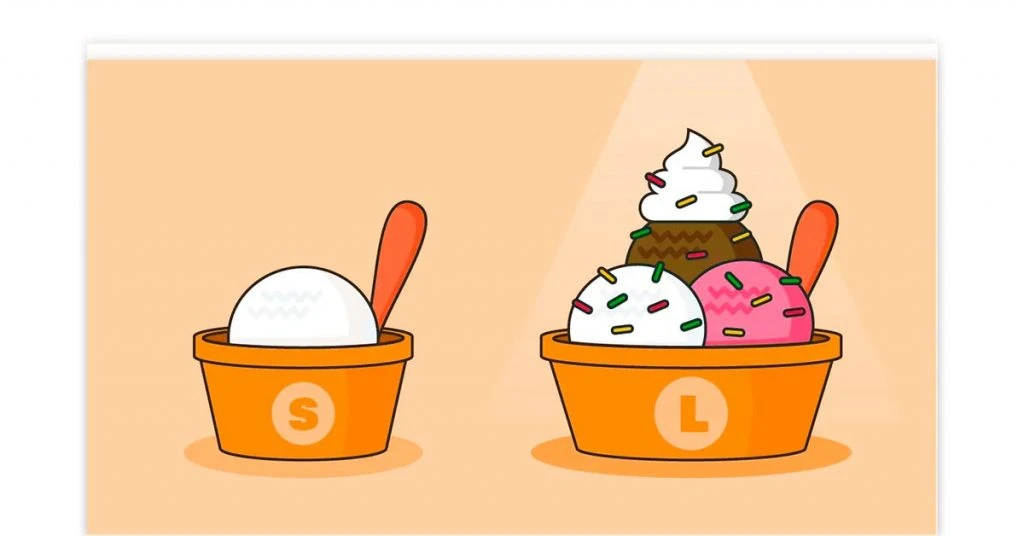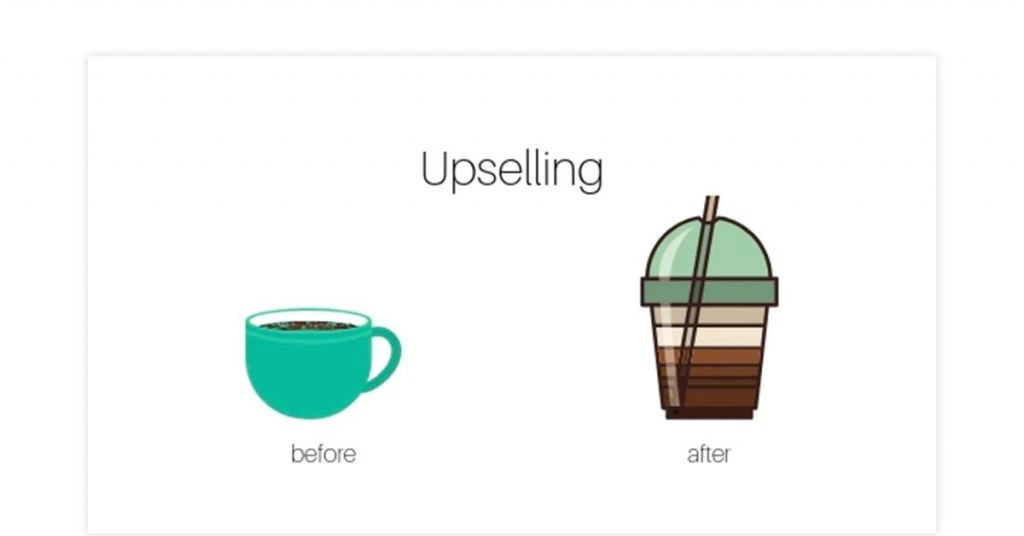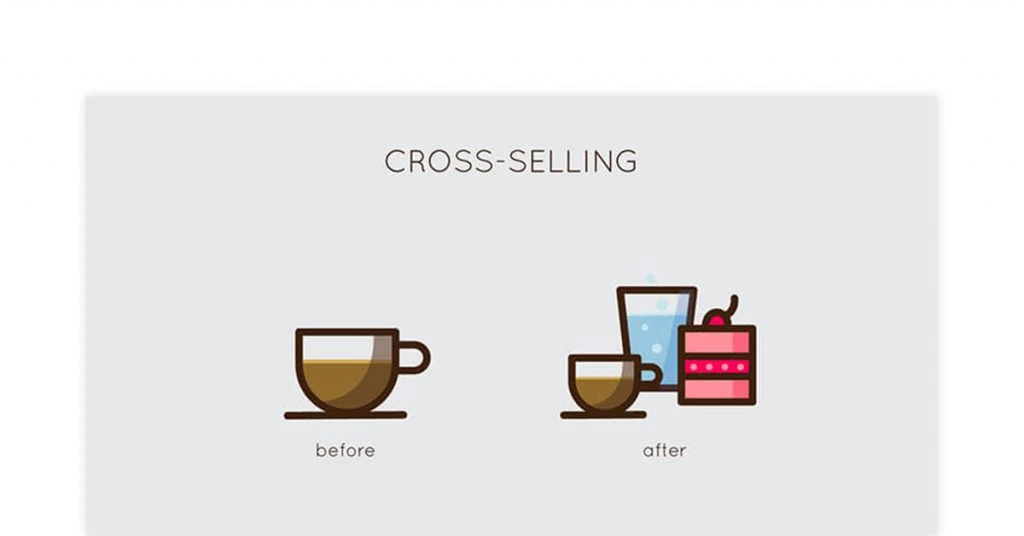Upselling and Cross Selling Strategies: Tips to Improve Your Revenue

Do you remember a time when you went to a fast-food restaurant like Burger King or McDonald’s, and they asked you if you wanted a larger size drink or to add fries to your order and make it a combo meal? Well, these are highly popular selling strategies, adopted not just in restaurants but also in various other industries.
The idea behind using these strategies in tandem is to increase your sales without spending large amounts on marketing to attract new customers. You rely on the preferences of your existing customers to increase sales. Existing customers are more likely to try a new product and spend money on buying it. Customers also feel more satisfied by getting a better experience.
No matter the size of your business, these strategies, namely upselling and cross-selling, help grow your business by increasing profits without expanding your budget and resources. This article discusses the two strategies in detail and the difference between Upselling and Cross Selling via examples.
What is Upselling?
Upselling is a technique used in sales to persuade existing customers into buying an advanced version of the same category of services or products that they want from your business. It is done by providing a better experience for the customer so that their needs are not only met but also exceeded.
The aim is to generate more revenue through sales by presenting or marketing more profitable options for an existing offering. By getting the same customer to spend more on your products over time, you increase customer lifetime value (CLV).
Proven UpSelling Techniques

Some upselling techniques that can be useful for your business are discussed next:
- Identify those who are looking for upgrade
It is important to ensure that your customers are currently satisfied with your services. Look for the signs and if they are not happy, fix their problem first. Also, know what your customers wish to buy from you and consistently nurture them. Plan your targets and prepare a timeline to pitch.
- Understand the relevancy before pitching
You must understand the customer’s mindset while showing the alternatives so that they appreciate them. One such way is showing side-by-side comparisons of pro versions. When customers see that they can get much better features that meet their requirements by spending just a little extra, they are more likely to go for the expensive option. This method does not come off as pushy either until you overwhelm them with too many choices.
- Create a feeling of urgency
You can entice your customers via discounts and time-bound offers for one-time purchases as well as subscriptions on relevant products. Determine a reasonable discount and include additional services while stating that it is a limited-time offer. You can also show real-time updates on your stock and state that only a few items are left. This technique is common during festivals, where customers readily spend money when they see products and services at slashed prices.
- Follow up consistently
By using customer data, you personalize their options and make their purchase more valuable. Even after the sale, you can nurture them by sending newsletters with ongoing offers, product updates, events, and more.
- Focus on helping
Instead of simply telling customers to go for a pro plan, tell them how they can benefit from the upgrade and achieve their goals. For example, if a product has customization and automation upgrades, you can help customers understand how it can not only solve the current challenges but also enhance the experience.
One way of convincing them is through reviews of their peers. Customers are more likely to trust others who have brought the upgraded versions.
Popular Up Selling Examples
Some of the companies that have witnessed huge growth in sales rate by upselling include:

- Amazon
Amazon’s upsell strategy deserves a lot of credit for the customers frequently coming to buy more products from the e-commerce site. Any time you browse a product category, you get the upsell options side by side.
Amazon personalizes user experience based on their data and boosts sales by showing relevant content, using color psychology, displaying items left, and more.
- Zomato
When you select a food item for ordering, Zomato shows quantity and size options before you check out. Sometimes, there are discounts on larger purchases which makes customers more interested in going for them. Every interested customer contributes to additional sales, thereby increasing the profits.
- Dell
Dell knows that not everyone is tech-savvy. It uses the ‘Help Me Choose’ feature for its upselling strategy to show all relevant options to the customers, including the expensive ones. These customized recommendations are based on the data provided by customers.
- Dollar Shave Club
Dollar Shave Club puts useful reminders on their product pages so that customers can restock extra moisturizers, razor blades, and other grooming products that they already own if they are running low.
The brand also ensures that expensive versions remain on top of the webpage. Such value-added options make Dollar Shave Club a promising brand that customers are happily ready to adopt.
- Tesla
Tesla enables users to get the experience that they wish for by allowing them to configure their cars before buying them. Users can upgrade the autopilot option, wheels, and more at an additional cost to have an improved experience.
What are the Popular Upsell Products?

Upselling is common in various industries like hospitality, banking, e-commerce, automotive, and so on. Some of the most common products include:
- Restaurant add-ons
Upselling of meals or drinks is highly common in restaurants. For instance, if you order a drink and the server offers the upgraded version for a little extra amount, it is a form of upselling.
- Automotives
As the base model of a vehicle just has the basic features, most people go for an upgraded model with additional capabilities like leather seats and an entertainment system at an extra cost.
- Hotel room items
Hotels often provide perks to customers during their stay to ensure that they are satisfied with their experience. This includes offering them a room with a mini-fridge, AC, television, and much more.
- Electronic items
When you go to buy electronic items like laptops and smartphones, you often get an option to buy the same model with a product warranty or other protection plans for an upgraded price.
What Is Cross-Selling?
Cross-selling is a popular sales strategy that aims at selling complementary products or services along with what is being bought by the customer already.
The choice of products or services depends on the interests of customers as the business knows their objectives and needs. The strategy is useful in building strong customer relationships and increasing their lifetime value.
Proven Cross-Selling Techniques

Cross-selling is only successful when you employ the right techniques. Some of the techniques that have worked well in the past are discussed below:
- Bundling products or services
You can bundle similar items or services that aim to solve a common challenge. For instance, if someone is buying a professional camera for photography, they might need a tripod as well. This helps in increasing the sales of complementary products.
- Use the order confirmation page
When a customer is buying something, you can display other products in the ‘Shop Similar’ category on the order confirmation page and promote related items. You can display intelligent recommendations before, during, and after purchase stages. The items are personalized based on customer preferences, which increase the chance of sales.
- Follow-ups via emails
You can use follow-up emails to thank your customers for their interest and add information about additional products and services that they may like. This way, customers get ready to order something that they initially did not even know they wanted.
- Threshold cross-selling
You can incentivize your customers by providing them with free shipping and discount thresholds based on their spending. You must have commonly seen it on shopping vouchers where you get a minimum discount on the purchase of a certain number of items.
- Recommendations based on cart items
Whenever customers add items to their cart, recommend them related products. Not only does it ease the customer’s effort in browsing but also helps with sales of more products.
Popular Cross-Selling Examples

Here are some examples of companies that have increased their revenue via cross-selling and can serve as a model for others:
- McDonald’s
At McDonald’s, customers are offered cross-sell products that enhance the experience of eating. These products are priced at lower rates compared to the customer’s order. There are not too many options at once to avoid confusing the customer, and if the customer refuses, they are not pushy.
- Flipkart
Ecommerce sites like Flipkart and Amazon have recommendation sections that show related products along with their reviews which customers might like to explore. The recommendation is also based on what other customers with similar requirements wanted.
- IKEA
It can be exhausting to choose furniture that goes with your house, especially when you are moving into a new one. The international brand IKEA recommends all the furniture pieces in the form of a single set, easing the task of customers.
- Screaming Frog
When you purchase marketing tools and services, you want them to be compatible with each other and not have to look for separate products from separate vendors. Apart from providing SEO Spider tool, the company provides additional services like social media marketing and SEM that businesses often require.
- Sephora
The company provides pre-packaged and pre-shopper bundles to its customers. The added advantage is that customers are also given certain customization options so that they can replace something they do not like with a similar alternative.
What are the Popular Cross-Sell Products?
Here are some of the products that are commonly offered as cross-sell items when a customer wants a related product:
- Choices for portfolio diversification
When customers invest in mutual funds, for example, advisors can cross-sell them funds in other sectors to help them diversify their portfolios. By cross-selling diverse types of investment options, you can provide additional services to your clients.
- Electronic accessories
Accessories for electronic items like phones and laptops are often cross sold both online and in offline stores. Customers readily agree to spend a little extra to get phone cases, laptop covers, and more.
- Side dishes
Side dishes are often offered in restaurants as add-ons to what a customer orders. These options are often less expensive than the original item, making it more likely for customers to order them too.
- Jewellery and bags
Customers are often looking to complete their look with matching accessories to go with their clothes. Artificial jewellery and bags are often sold as options to complement your chosen outfit.
- Interior decoration items
Interior accessories like lamps and candles are often sold as add-ons to your furniture and other household items.
Difference Between Upselling and Cross-Selling

Let’s dive into Upselling and Cross Selling differences.
Definition: Upselling is a way of encouraging existing customers to buy a relatively higher-end product than the one they originally wanted. Whereas cross-selling is about convincing your customers to buy complementary or related services or items.
Target audience: Upselling targets customers who want more capabilities in their existing product without paying a hefty amount to have an alternative. Cross-selling aims to help those customers who are satisfied with their existing product but want to have more products for other related activities.
Value of originally desired product: In upselling, you show how the product that your customer wants is not enough to provide them with the experience they want. However, cross-selling is about adding more items to achieve their goal.
Chances of success: Upselling has higher chances of succeeding given that the upgraded version is within the budget of the customers. If the customer is offered a product or service that is not within the budget, he or she would rather be fine without the additional capabilities that may not be so important.
On the other hand, the complementary items in cross-selling are usually the ones that customers would purchase at some point. However, showing them at the right time helps ensure that they purchase them solely from your business.
Upselling and Cross Selling: Difference at a Glance
Some of the major differences between upselling and cross selling are tabulated below for your reference:
| Upselling | Cross Selling | |
| Suggestion | Showing the better version of the product or service | Showing the additional products or services available |
| Initially desired choice | If successful, customers will not buy what they originally wanted | If successful, customers will still buy what they originally wanted |
| Offering to increase customer satisfaction | Bigger item sizes, new software upgrades, more configurations | Related items or services that are often used together in the completion of tasks |
| Techniques | Side-by-side comparisons, creating urgency, providing value to the customer | Threshold cross-selling, product recommendations, follow-ups |
| When it fails | When the suggested product is overly priced, or the existing product is enough for a satisfactory customer experience. | When the additional products or services do not usually go together, or the existing product is sufficient to get the work done and gain the experience they want. |
Conclusion
Upselling and Cross Selling are great strategies that can increase ROI for a business significantly when used in combination. Remember, do not be too pushy and use the right techniques for these strategies to be effective.
FAQs
What are the techniques for upselling and cross selling in retail?
Upselling in retail involves convincing the customer how a more expensive option of the same type, like a dress, looks or works better for them. Cross selling in retail includes displaying low-priced products near checkout lines and counters like phone cases, headbands, accessories, etc.
What are the techniques for upselling and cross selling in banking?
Upselling in banking includes offering membership upgrades to get more value from the services. Cross selling includes offering cheques to those opening a bank account or investments to those working on tax filing.
What are the best upselling and cross selling examples?
Some of the best upselling and cross selling examples can be those set by e-commerce brands like Amazon or fast-food chains like McDonald’s.
When you visit Amazon’s website, the side-by-side comparison of different versions of a model is an upselling technique while the product recommendations and bundling of items together are cross-selling techniques.
Related Categories: Customer Support Software | Live Chat Software | Customer Experience Management Software | Customer Feedback Management Software
Ayushee is currently pursuing MBA Business Analytics from SCMHRD, Pune with a strong background in Electronics and Communication Engineering from IGDTUW. She has 2 plus years of full-time work experience as an SEO content writer and a Technology Journalist with a keen interest the amalgamation of business and... Read more




























